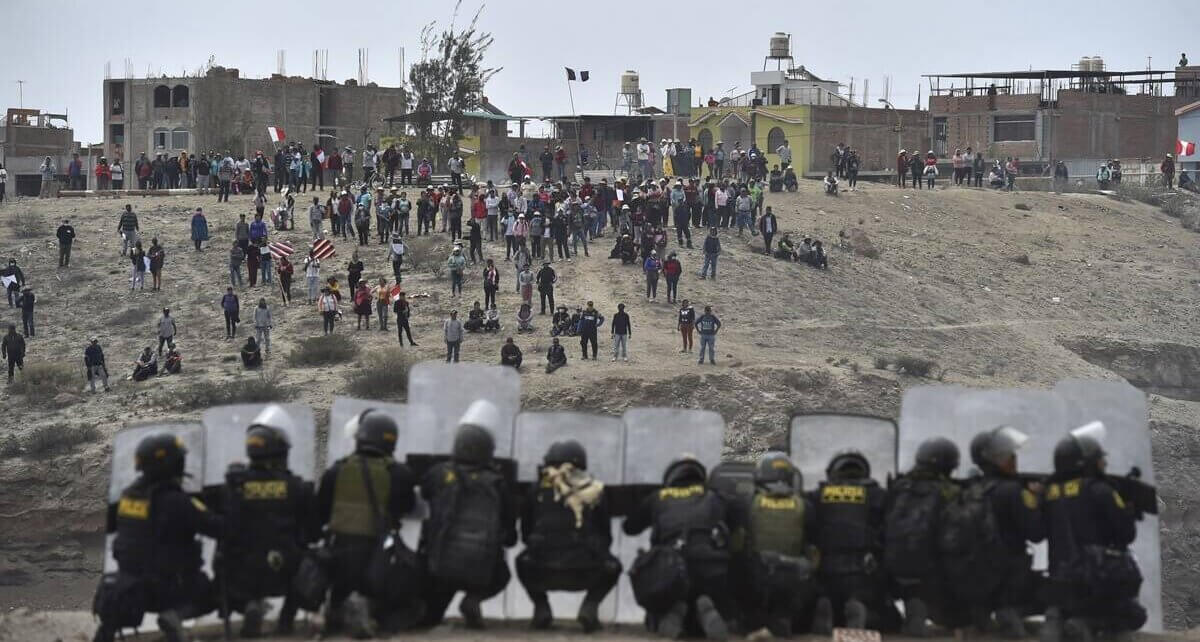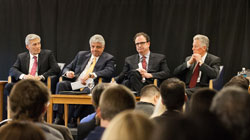Civil unrest has been prevalent in the ongoing political crisis in Peru since the ousting of former President Pedro Castillo on Wednesday, Dec. 7.
Castillo had attempted to end a standing session of Congress during a hearing concerning allegations of treason and corruption charges levied against him.
In his response, Castillo called for military support to form a snap assembly to amend the Peruvian Constitution to “…temporarily dissolve the Congress…[and establish] an exceptional emergency government.” However, Castillo failed to form a military-coalition, and Congress voted down dissolving the hearing to prevent impeachment, thus leading to his removal from power.
The conflict in Peru is tied to its nature of political crises over time as a result of the ambiguity of the country’s constitution. Between 1993 and 2023, 30 amendments have been made.
The political system in Peru has eroded with the rise and fall of its old party establishment, causing fractionalization that has made it more challenging to govern. For example, Castillo maintained only 15 seats of the 130 seat assembly.
Politically, the U.S. has shown interest in the development of democracy in Peru. One day before inter-congressional opposition to investigate the alleged charges of treason and corruption began, the Biden Administration sent Lisa Kenna, the Ambassador to Peru and an ex-informant and officer to the CIA, to meet with Gustavo Bobbio, Peru’s Minister of Defense.
Following the meeting, Minister Bobbio publicly made denunciatory statements concerning Castillo’s presidency. On Thursday, Dec. 8, the day after the coup, Kenna granted recognition of the newly formed Congress in conjunction with the Office of the Military Assistance and Advisory Group—an extension of the Peruvian government known for its foreign outreach.
The new sitting president, Dina Boluarte, made it clear that she does not intend on resigning from her position. Boluarte stated that her main goal is to continue dialogue among Peruvians: “I apologize for this situation and for what has not been done to avoid these tragic events. But, just as I ask for forgiveness, as president I ask with all my heart that we reject violence.”
Veronica Belloso, a freshman studying political science concentrating on international relations, believes that the U.S. should take a more relaxed approach to policy “…because the U.S. has a lot of domestic issues that are not addressed. Before we can properly help any other nation, we need to figure out [ourselves].
Belloso continued, “This is more of a long term goal, that should definitely be done in small doses in the future but there are really…pressing matters in the United States…at least [for] me, who comes from an immigrant family, I have family members…who think that we are getting too involved. We’ll continue to show support for [Peru]…but I doubt that we’ll ever be a political figure that Peru looks up to.”
Sam Maynard, Instructor of Political Science and Sociology, holds that the indigenous protests are a normal part of Latin American politics. He said, “Indigenous politics is important. This is typically where you still have a large population of indigenous people and it’s something that comes into the fray after the democratic transition. I don’t think that this is about indigenous politics, it’s always bound to be a part of the conversation.”
Maynard further noted that the role of the U.S. is to maintain stability. “I’m not the type of person to say that this is an American plot. There are natural interests for the United States. If we compare this to Bolivia where Morales faced resistance, which lead to his eventual ousting… the U.S. meeting with the envoy and legitimizing the new government is obviously trying to influence politics in Peru. This is a problem of Peru, a weak president, a strong congress, “Why does Castillo try to do this? Because he has no support. Fujimori did this 30 years ago, there’s a precedent for this strategy.”
The ongoing political crisis in Peru also came from the inexperience of the executive.
“We’re not going to see a new constitution in Peru…this is a miserable failure. The only possible way that the constitution gets rewritten is if some change happens where the government becomes vulnerable. Right now, it seems okay. They are able to repress people. In Peru, all we have right now is violence. There’s no incentive to back down on either side.”
Unrest in Peru is a part of a cycle of domestic politics and regional affairs.
In trying to resolve the crisis and in the maintenance of keeping the party in power, then-President Castillo tried to dissolve the standing Congress and subsequently caused several weeks’ worth of political unrest, violence, protests, and calls to reform, or rewrite, the constitution.
However, the inadequacy of the attempted coalition military government aligned with Castillo’s camp, led to his arrest and the assumption of the presidency to Boluarte.
Peru’s forward movement is currently focused on maintaining political balance while working against the antagonisms between the public sphere and the governmental and political structure.
As it stands, this key conflict will remain as the launch pad for the future of the region, until a popular legislative consensus is agreed upon.


